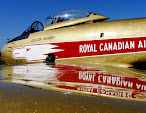""FM136 C/N #3337 code RX136 dedicated =
as the Lady Orchid of 434 Blue Nose Sqdrn RCAF""
Built in May 1945; Delivered to England in Jun 1945 to (a)#32(MU) Lyneham Wilts; issued to (b)#419(HB) squadron Returned to Canada for use with Tiger Force on the August 29th 1945 but too late for that force; stored at Pearce,Alta.; Converted Mk.10MR; issued to (c)#404(MP) Sqdrn. Greenwood, N.S.; later transferred to (d)#407(MR) Sqdrn. Comox, B.C. then as code 'RX136' (1952-59); stored at Ft. Macleod, Alta.; coded 'RX136' (1952-59); stored at Ft. Macleod, Alta.; flown to Calgary C.C.A.Reg as CF-NJQ; in 1961 then placed on a pedestal in front of the Main Terminal at the Calgary International Airport on 1962.
Then re-coded (e)'VN-N' of #50(B) Sqdrn RAF on the pedistal; put under the care of the Aero Space Museum of Calgary and repainted in 1986 to wartime camouflage with code (f)'NA-P' of #428(B) Sqdrn RCAF; removed and from the pedestal in Apr.1992 and rededicated (g)'WLO #434 Sqdrn RCAF and now permanently displayed at the HANGAR FLIGHT MUSEUM which is owned by the People of Calgary, City of Calgary Alberta Canada.
Lancaster Mk X serial KB895 aircraft was air-tested by Ron Jenkins Pilot/Sipper and crew;
Navigator - F/O Savage A.W.
Bomb Aimer - F/O Hines P. J.
Wire Operator - F/Sgt. Mc Lean N
Engineer - Sgt. Foss D. C.
Rear Gunner - Sgt. Baird T. B.
Mid-Upper - F/Sgt. Moodie K.
Upon completion of the testing Wing Commander J.C. Mulvihill informed Jenkins the new bomber, serial KB895, would become his bomber with code WL-O. The crew now decided “their” bomber needed a name and Nose Art painting. At first they named her “Wee Lady Orchid” for each of the code letters, then later dropped the Wee and she became “Lady Orchid”.
Pilot Jenkins painted the name in large white letters with a larger red capital L and O. The complete crew then shared in the painting of the Lady Godiva pin-up riding a bomb while holding two Calgary Western style six shooters with Ochid nose art painted fully nude.
Squadrons our (FM136) actually belonged too:
a) 6 Group
b) 419 Moose Attack Sqdrn RCAF
c) 404 Buffalo Sqdrn RCAF
d) 407 Demon Sqdrn RCAF
e) #50 Home to Attack Sqdrn RAF
f) 428 Ghost Sqdrn RCAF
g) 434 Blue Nose Sqdrn RCAF
This is why the KB895 WLO Lady Orchid (FM136) has Blue Spinners over the 4 props, as she is part of "Blue Nose Squardron".
Posted by,
Richard Abbenbroek
Navigator - F/O Savage A.W.
Bomb Aimer - F/O Hines P. J.
Wire Operator - F/Sgt. Mc Lean N
Engineer - Sgt. Foss D. C.
Rear Gunner - Sgt. Baird T. B.
Mid-Upper - F/Sgt. Moodie K.
Upon completion of the testing Wing Commander J.C. Mulvihill informed Jenkins the new bomber, serial KB895, would become his bomber with code WL-O. The crew now decided “their” bomber needed a name and Nose Art painting. At first they named her “Wee Lady Orchid” for each of the code letters, then later dropped the Wee and she became “Lady Orchid”.
Pilot Jenkins painted the name in large white letters with a larger red capital L and O. The complete crew then shared in the painting of the Lady Godiva pin-up riding a bomb while holding two Calgary Western style six shooters with Ochid nose art painted fully nude.
Squadrons our (FM136) actually belonged too:
a) 6 Group
b) 419 Moose Attack Sqdrn RCAF
c) 404 Buffalo Sqdrn RCAF
d) 407 Demon Sqdrn RCAF
e) #50 Home to Attack Sqdrn RAF
f) 428 Ghost Sqdrn RCAF
g) 434 Blue Nose Sqdrn RCAF
This is why the KB895 WLO Lady Orchid (FM136) has Blue Spinners over the 4 props, as she is part of "Blue Nose Squardron".
Posted by,
Richard Abbenbroek






































